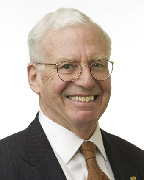Commercial real estate continues to benefit from moderate economic growth. The FED, characterized as muddling through its April FOMC meeting and reported conclusions, is expected to pause on rates through September on rates, maybe longer in 2015. Stock exchanges have continued to be volatile as credit, currency and oil markets fluctuate. Local property markets are recording some cyclical inflection symptoms.
GDP grew .2% in the first quarter 2015 based on advance estimate by the Bureau of Economic Analysis (U.S. Department of Commerce) released April 29, compared with 2.2% in the fourth quarter 2014. The broadly bad winter weather in the first quarter is blamed among other causes. Port labor disputes and energy prices were traceable causes. The contracting U.S. exports because of strong dollar and overall global slowdown were also blamed. Energy independence trends for U.S. have riled the oil market and resulted in extraordinary downward pressure on the price of crude oil. U.S. energy production and related providers also have contracted because of dramatically compressed margins. All of the above forces are generally logical and most are difficult to time or scale. Some, particularly the weather and labor disputes, are considered transitory.
Additions to local property inventory in several major geographic property markets are resulting in higher vacancy and lower rental rate gains which symptomatic of inflection in property cycles. In Cycle Forecast - Fourth Quarter 2015, Glenn Mueller, PhD. (Dividend Capital Research) estimated demand for all property should be strong for 2015 with the possible oversupply in apartments, which will hopefully abate in 2016. Mueller aggregates property data for over 50 U.S. major markets for the five major property types. Since 1995 Mueller has provided quarterly reports forecasting four-cycle phases for property markets. For the 2015 forecast for apartments, only six minor markets were at or approaching peak of the cycle, increasing rents and declining vacancies. The remaining 40 or so geographic markets, including all ten major reporting markets, have passed a peak and are recording increasing vacancies and pausing if not declining rents. All ten major markets are in this phase characterized as disequilibrium where supply outpaces demand. Orderly absorption of new deliveries can of course be a qualifying assumption. Mueller hopefully expects abatement of negative symptoms in the apartment markets in 2016 with orderly absorption as moderate fundamentals prevail.
Mueller and his cycle conclusions are essential reminders that property cycles can be independent of economic and capital cycles. The balance of local supply and demand is all important, if not a trumping, factor in market dynamics. The summer will hardly be ho hum. The extraordinary complexity of the global economy and the leadership of the U.S. in so many markets will make economics a compelling if not unnerving read and ride!
David Kirk, CRE, MAI, FRICS, is principal and founder of Kirk & Company, Real Estate Counselors, Boston.
Tags:








